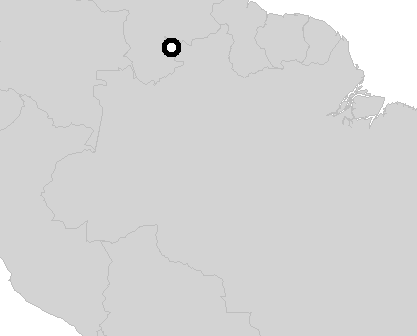
| www.CuriousTaxonomy.net |
|
The Flood in World Myth and Folklore
Amazon Basin |
| © 2021 Mark Isaak |

The daughter of Rahaririyoma went to a river to fetch water. Omauwä (one of the first beings) and his brother Yoawä found her and copulated with her; then Omauwä changed the girl's vagina into a mouth with teeth. Howashiriwä, another of the first beings, then saw her and seduced her, but her vagina bit off his penis. Then the son of Omauwä became very thirsty. Omauwä and Yoawä dug a hole for water, but they dug so deep that water gushed forth and covered the jungle. Many drowned. Some of the first beings survived by cutting down trees and floating on them. This was such a strange thing to do that they became foreigners and floated away, and their language gradually became unintelligible. The Yanomamö survived by climbing mountains, namely Maiyo, Howashiwä, and Homahewä. Raharariyoma painted red dots all over her body and plunged into the lake, causing it to recede. Omauwä then caused her to be changed into a rahara, a dangerous snake-like monster that lives in large rivers. Omauwä went downstream and became an enemy of the Yanomamö, sending them hiccups and sickness.
Chagnon, Napoleon A. Yanomamö, The Fierce People (Holt, Rinehart and Winston, 1977), 46-47.

A race of dwarfs, called oineitib, lives in the world under the earth. They have no intestines or anuses, and they eat their meat raw, cut into little pieces, without chewing. They are constantly hungry, and they eat quickly. Occasionally one of the dwarfs comes to the earth and visits a man. The man cannot see him, but is overcome with ravenous hunger and must visit the shaman to have the dwarf removed. Sometimes the dwarfs eat menstruating women who hide their condition.
Once, the subterranean river grew to tremendous size and burst through the earth under a house in which lived a woman who was hiding her condition. The house collapsed; its inhabitants drowned, except for the women, who were devoured by the dwarfs. Their souls went to live with the strong man and would never ascend and live with Omao.
Wilbert, Johannes and Karin Simoneau, Folk Literature of the Yanomami Indians, Los Angeles: UCLA Latin American Center Publications, 1990, p. 500.

In other versions of this myth, the hole was dug by Koromarithawe, a kind of bird and grandson of Õmawë, and the water was the source of the world's rivers.
There was no water, no streams or rivers. Õmawë's son was thirsty and cried all the time. With his bow, Õmawë pierced the ground where he heard water. Giant Armadillo was the master of underground water, and his back immediately appeared on the surface. When Õmawë pulled out his bow, water burst forth all the way up to the sky, where Thunder lives. A lot of it settled there, forming a sheet.
When his son had drunk until his stomach was swollen, Õmawë tried to plug the hole, but the earth crumbled around it. The water spread out, carrying off the Yanomami. Some people hung their hammocks in palm trees to escape the flood. Others fled to Mount Maiyõ, Mount Hõmahewë, or Mount Koawë. The water was like a hungry cannibal. As the water did not recede, the people hastily shaved the head of an old woman, painted curved lines on her face, and threw her in.
Then the water began to run off. Those who survived used long sticks to pull in taro, plantain, rasha palms, manioc, and banana plants, so they could plant them later. Then they descended.
Wilbert, Johannes and Karin Simoneau, Folk Literature of the Yanomami Indians, Los Angeles: UCLA Latin American Center Publications, 1990, p. 405-410.
